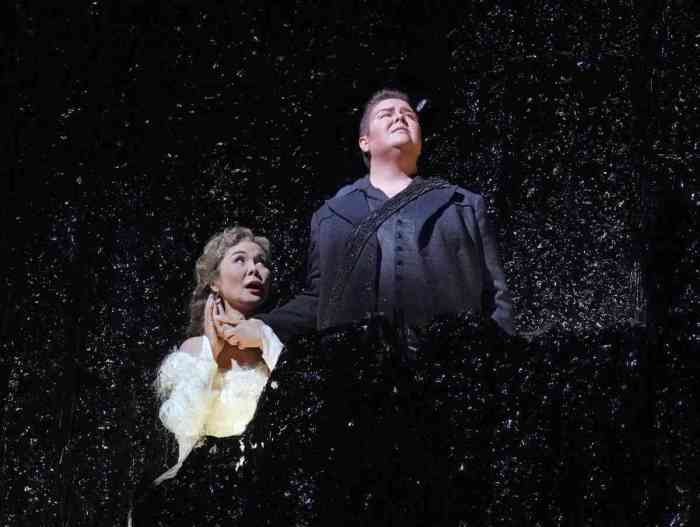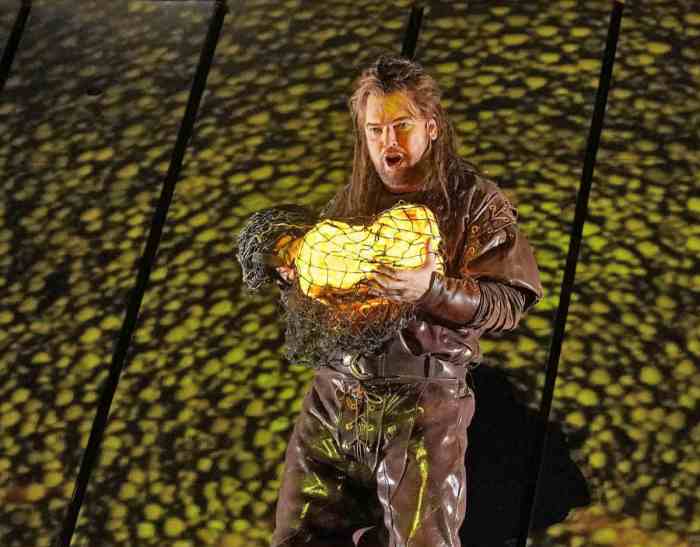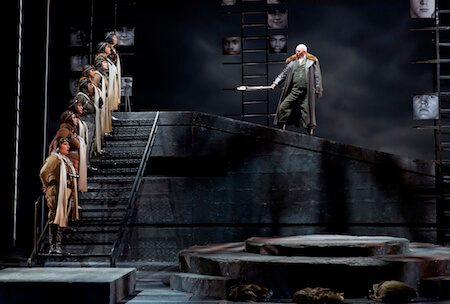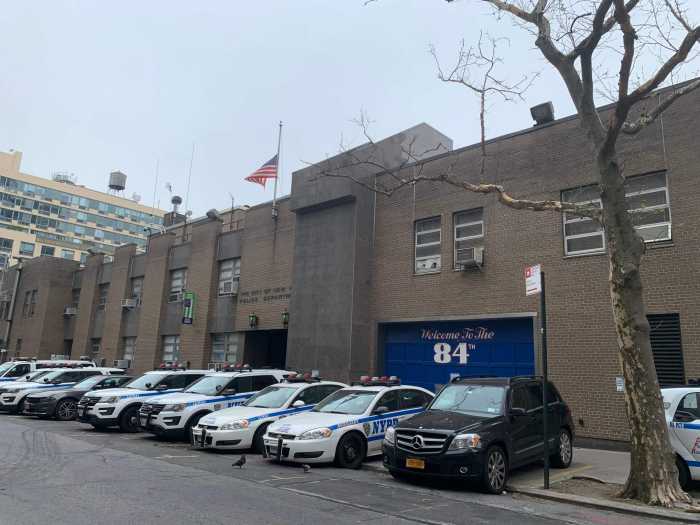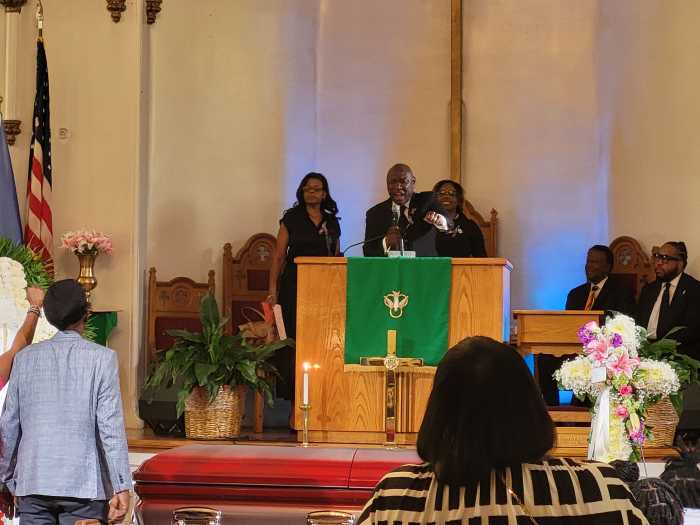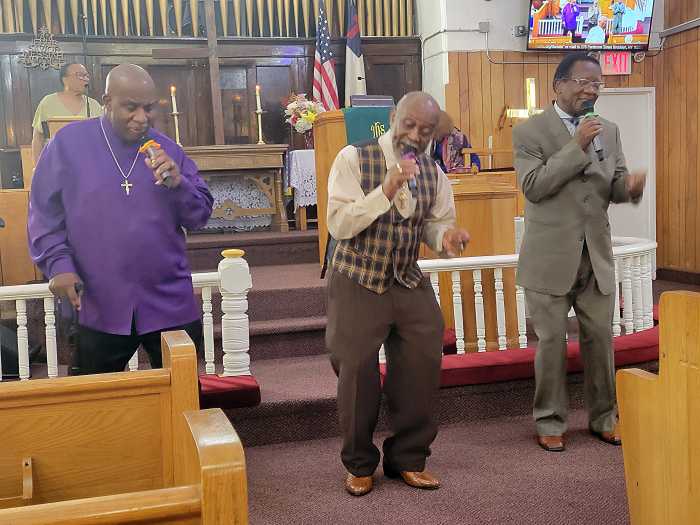Angela Meade and Michele Angelini in Will Crutchfield’s “Bel Canto at Caramoor” series production of Donizetti’s “Lucrezia Borgia.” | GABE PALACIO
Larger framed singers with equally grand voices win vocal competitions but often find the doors of the world’s opera houses closed to them. Thinner, photogenic singers with less unique imposing voices are preferred by visually oriented opera directors and publicity minded impresarios.
A press firestorm erupted in May over British opera critics’ fat-shaming reviews of Irish mezzo Tara Erraught in Glyndebourne’s “Der Rosenkavalier.” Mezzo Alice Coote wrote an online open letter to critics lambasting the current trend of listening with the eyes, illustrating her thesis by comparing the two casts of last fall’s Met revival of “Norma.” In Coote’s view, the alternate cast outshone the starrier — and slimmer — opening night divas.
“They perhaps were not physically slight as in a Grazia magazine cover, but boy could they SING,” she wrote. “These were great voices that filled the theatre and hit the solar plexus. The audience were immediately gripped by what hit their senses and ears and a huge standing ovation occurred at the end.”
Angela Meade and mezzo-soprano Jamie Barton prove their mettle in summer concerts
The alternate singers were soprano Angela Meade and mezzo-soprano Jamie Barton. Both performed in concert this summer and demonstrated that, in opera, good things do in fact come in big packages.
Meade and Barton were both winners of the 2007 Met National Council Auditions. In 2008, Meade made her professional operatic debut on the Met stage but engagements abroad have been few. Meade sings more concerts than staged opera. On July 12, under the auspices of Will Crutchfield’s “Bel Canto at Caramoor” series, Meade unveiled the title role of Donizetti’s “Lucrezia Borgia” in the original 1833 version.
Crutchfield conducted the Orchestra of St. Luke’s with elegant clarity and assembled a good cast around his star soprano. Michele Angelini has a light tenore di grazia better suited to Rossini, but he communicated the lost boy vulnerability of Lucrezia’s abandoned son Gennaro with heady plangent tone and touching sincerity. Tamara Mumford as his close friend (maybe more than friend…) Maffio Orsini displayed an agile mezzo-contralto with smoothly integrated, distinctive tone that has been underutilized in comprimario parts at the Met. Bass Christophoros Stamboglis as Lucrezia’s villainous husband Alfonso D’Este has a grainy but broadly thrusting tone that embodied bullying power and arrogance, though perhaps more aristocratic bel canto elegance would be ideal.
Meade has cited Montserrat Caballé as one of her models, and her long-held, disembodied pianissimo high notes in Lucrezia’s entrance aria were worthy of the Spanish diva. Meade also sustained a long-held crescendo high note for several bars in the prologue’s ensemble finale. She drowned out her colleagues in unison high notes and was formidable in confrontation with her husband. The original florid rondo finale “Era desso il figlio mio” was a bravura tour de force of cascading coloratura, though more rhythmic shaping and accentuation are needed. (Meade performed Donizetti’s more dramatic revised finale in the repeat performance on July 18.)
Meade was off book and very much in command — one hopes this concert will lead to staged performances. A 1965 American Opera Society concert performance of “Lucrezia Borgia” at Carnegie Hall turned Caballé into an overnight superstar. If she had emerged in today’s image-conscious opera world would her star have risen to the same height? One has to wonder.
Jamie Barton’s 2007 prize garnered her only secondary roles at the Met and regionally. In 2013, she won both the Cardiff Singer of the World Competition as well as its Song Prize. Now in her early 30s, Barton is finally taking on powerhouse dramatic mezzo-soprano roles like Fricka.
Opening the Met’s summer recital series at Central Park’s Summerstage on June 23, Barton gave a taste of the future, trying out Amneris and Azucena in tandem with soprano Amber Wagner and tenor Russell Thomas. In the “Aïda” Act II chamber scene duet, Barton’s Amneris initially sounded too benevolent in her false concern for Wagner’s Aïda, but she scored in the ensuing angry confrontation. Her crazed Azucena, heard in the last act “Ai nostri monti” duet, ranged from blazing soprano tops to contralto depths in her opening recitative. A soaring and accurate two-octave cadenza gave way to haunting soft legato tones in unison with Thomas’ Manrico.
A smoldering “Acerba voluttà” from “Adriana Lecouvreur” contrasted with a comically over the top Witch’s aria from “Hänsel und Gretel” demonstrated Barton’s equal command of German and Italian opera. Two duets from “Norma” with her tenor and soprano colleagues emphasized maidenly tonal elegance and arching high phrases. Some effort on top reminded us that this is a soprano role.
Thomas and Wagner also explored new Verdi repertoire. Thomas’ bronzed, secure tenor flowed with unforced power in an aria from “Macbeth” and a “Don Carlo” duet with Wagner. And he maintained bright agility in lighter arias from “Rigoletto” and “Hoffmann.”
Wagner’s tone is glowing, refulgent, and warm — reminiscent of Eileen Farrell and Christine Brewer. Her Verdi duets and the aria “Pace, Pace Mio Dio” needed firmer tone and more rhythmic drive and textual coloration. A surprisingly idiomatic, jazz-inflected “My Man’s Gone Now” from “Porgy and Bess” reminded one of Farrell’s crossover successes. A poised and radiant “Elsa’s Dream” from “Lohengrin” revealed why the California soprano is increasingly in demand for youthful heroic Wagnerian heroines.
Dan Saunders at the piano was adept in a wide range of musical genres and styles. All three singers are large of frame but also distinctive, exciting, and generous in sound. Mistress of ceremonies Margaret Juntwait excitedly observed that the stage was vibrating with the impact of their combined voices.


